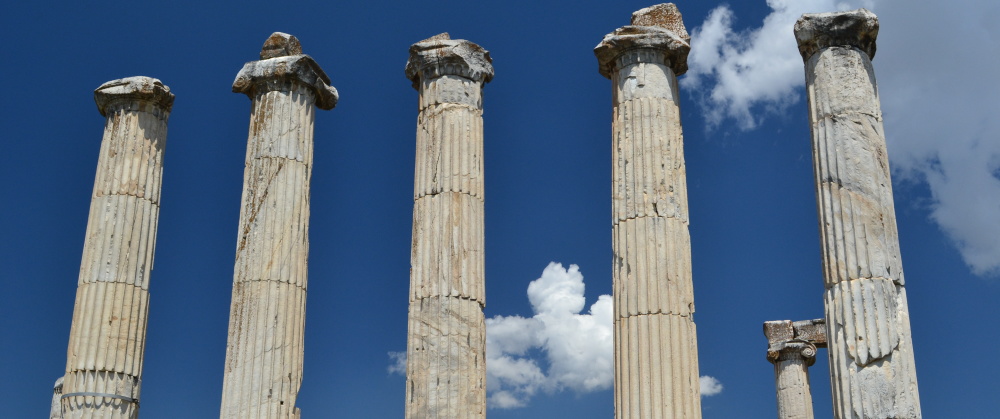In 1895, the German epigrapher Ludwig Bürchner visited the Greek island of Samos to record inscriptions, which he placed in a notebook that currently is in the archive of the Inscriptiones Graecae at the Berlin Academy (Germany). One epigraph that Bürchner noted was a Latin epitaph that may refer to Lucius Sergius Paullus; the most probable candidate for the Cypriot proconsul whom Paul and Barnabas encountered on Cyprus (Acts 13:7).
This funerary inscription remained unknown to most of the scholarly world until 1964, when another German epigrapher, Günter Dunst published all known Latin epigraphs from Samos, which were known at that time.[1] In the process, he pointed out the existence of a certain first century AD “grave inscription” (Grabinschrift), which refers to “a slave of L(ucius) Ṣẹrgius Paullus” (eines Skiaven des L(ucius) Ṣẹrgius Paullus) named “Gemellus” (Gemellus).
Some historians have accepted Dunst’s identification. Professor Werner Eck (Cologne University, Germany) comments on the epitaph:
Vermutlich ist dies der in der Apostelgeschichte bezeugte Sergius Paulus; sein Sklave war vielleicht auf der Fahrt nach dem Osten auf Samos gestorben. Er erhielt ein eigenes Grab und der volle Name des Herrn sagte, dass der Verstorbene kein Niemand gewesen ist.
Presumably, this is the Sergius Paulus attested in the Acts of the Apostles; perhaps his slave died on Samos on his journey to the East. He received his own tomb and his master’s full name testified that the deceased was not a nobody.[2]
In 2003, Prof. Klaus Hallof (Berlin-Brandenburg Academy of Sciences and Humanities, Germany) edited all the Samian inscriptions and revisited the epigraph in question. After consulting Bürchner’s notebook, he reproduced the following text, restoring the name Lucius Sergius Paulinus, not Lucius Sergius Paullus:
Gemello ∙ L(uci) ∙
Ṣẹrgi ∙ Paul–
[i]n[i ∙] servo
– –m ∙ f(aciendum) c(uravit) ∙ Dro–“For Gemellus, the slave of L(ucius) Sergius Paulinus, who made this . . . Dro . . .”[3]
I have been unable to examine the epigraph or see a picture of it. Presumably, the inscription is lost and Prof. Hallof informs me that the squeeze that Bürchner made is of poor quality. Therefore, it remains debatable whether or not the stone refers to the member of the Sergii Paulli whom Paul and Barnabas probably met.
Nevertheless, Alexander Weiß proposes that even if the epitaph refers to Lucius Sergius Paulinus, he still may be associated with Lucius Sergius Paullus:
denn Paulinus wäre wohl ein Freigelassener oder ein Nachkomme eines Freigelassenen dieser Familie.
For Paulinus is probably a freedman or a descendant of a freedman of this family.[4]
Weiß may be correct. Hopefully, future epigraphic discoveries will shed light on this epigraph and the presence of Lucius Sergius Paullus or Lucius Sergius Paulinus on Samos and his possible connection to early Christianity.
[1] Günter Dunst, “Die lateinischen Inschriften von Samos,” Helikon 4 [1964]: 284
[2] Werner Eck, “Sklaven und Freielassene von Römern in Iudaea und den angrenzendenzenden Provinzen,” Novum Testamentum 55 (2013): 19
[3] IG XII.6 no. 711
[4] Alexander Weiß, Soziale Elite und Christentum Studien zu ordo-Angehörigen unter den frühen Christen (Berlin: De Gruyter, 2105), 73.











